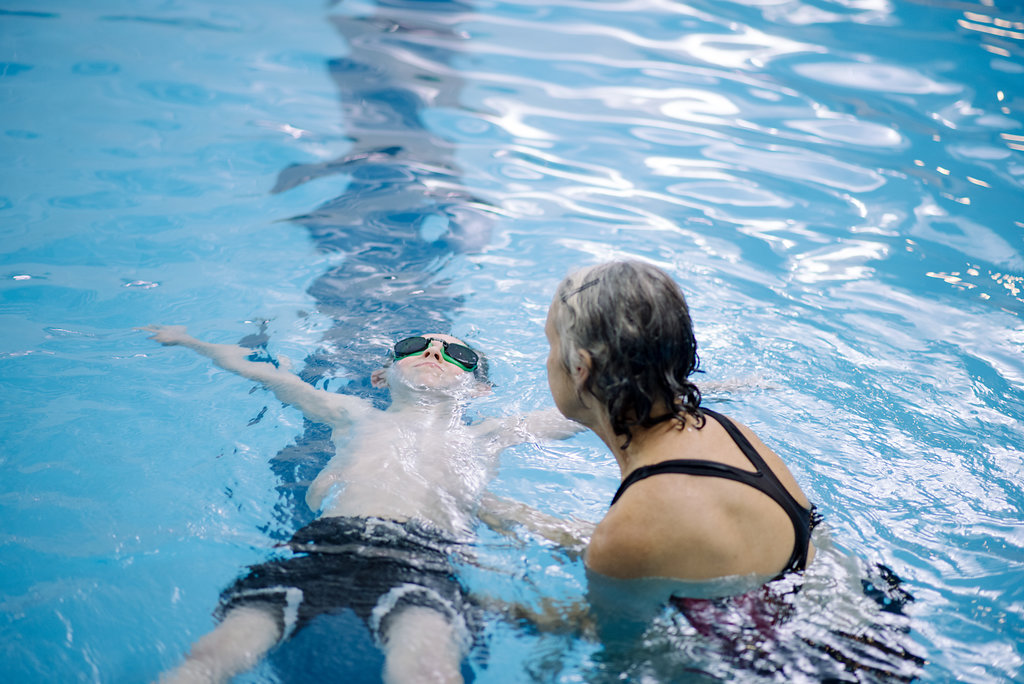
Floating allows you to stay near the surface of the water where you can rest and get a breath while waiting for help to arrive in the event of an emergency.
Not everyone floats easily, and it sometimes takes both physical and mental adjustment to keep your body relaxed. To float on your back:
• Submerge to your neck in chest-deep water.
• Hold your arms overhead and slightly out to your sides.
• Lay your head back until your ears are in the water and your chin is pointing up and away from your chest.
• Without pushing off the bottom, arch your back, pushing your hips and stomach toward the surface of the water letting your body move to its natural floating position – horizontal, diagonal, or nearly vertical.
• Keep your legs relaxed, knees slightly bent and feet beneath the surface. Breathe rhythmically in and out through your mouth every few seconds.
• When you want to stand up, take a breath, tuck your chin to your chest, bring your knees up toward your chest, sweep your arms back, down and forward in a circle. When you are vertical again, exhale, extend your legs until your feet touch the bottom and stand up.
If you have trouble floating and tend to sink, you can use your arms in a back and forth motion or use small kicks to help you stay near the surface with little effort.
